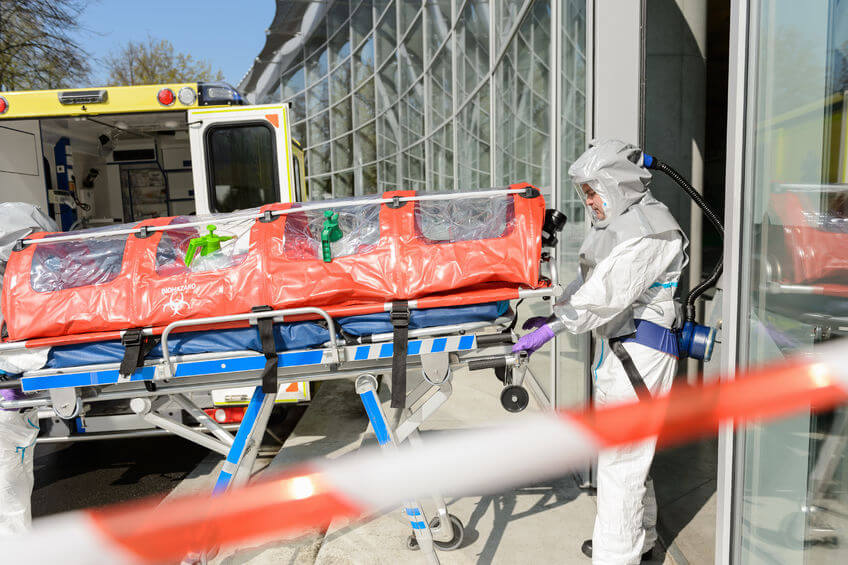
2014 Ebola Outbreak
On March 25, 2014, the World Health Organization reported 86 cases of Ebola and 59 deaths in Guinea. Over the spring and summer months, the number of cases in Africa swelled to a staggering 3,069 cases and 1,552 deaths by August 28. This makes the 2014 Ebola outbreak the largest and deadliest since the discovery of the virus in 1978.
Symptoms
Ebola hemorrhagic fever often starts with mild symptoms that are easily confused with typhoid, malaria and even the seasonal flu. Fever, chills, headache and body aches usually begin presenting within two days to three weeks, though the CDC says the typical incubation period for the virus is between eight and ten days. People infected with Ebola may later have additional symptoms, including:
- Chest pain and coughing
- Diarrhea
- Nausea and vomiting
- Raised and/or red rash
- Severe weight loss
- Stomach and abdominal pain
- Unexplained bruises and bleeding
While some people do recover from Ebola, the virus is often fatal in humans. Medical researchers have been unable to determine the exact reason some people recover and others do not.
Transmission
Contrary to popular belief, Ebola is not a highly contagious virus. Unlike other viruses, people can only contract Ebola through direct contact with infected blood and bodily fluids, including saliva, feces, urine and semen. In addition, the virus can only enter the body through broken skin and mucous membranes. There is currently no evidence to suggest that Ebola can be transmitted through air, food, water or insect bites.
Unfortunately, unsanitary conditions in the affected regions of Africa make the virus more difficult to contain. This is especially true in health facilities where syringes are reused and medical workers don’t take appropriate precautions. The people who prepare the dead for burial are also at an increased risk for contracting Ebola because the virus can survive in the body fluids even after death.
CDC Involvement
After the 2014 Ebola outbreak began, the Centers for Disease Control and Prevention issued multiple travel warnings urging US travelers from going to the affected region of Africa. They also began training healthcare workers and customs officers how to recognize the symptoms of Ebola and how to handle suspected infected individuals.
The CDC confirmed the first travel-related Ebola case in the US on September 30 in Dallas, Texas. The patient, Thomas Eric Duncan, arrived in the country from Liberia on September 20 and did not begin feeling ill until four days later. The CDC is currently working in partnership with the Texas Department of Health to identify people who may have come into contact with the patient so that they can be tested and isolated if necessary.
The CDC remains confident that Ebola will not pose the same threat here as it does in Africa because of the quality of the American public health system.
Update 10/9/2014:
On October 4, Duncan was treated with the experimental drug Brincidofovir, but his condition continued to worsen. Thomas Eric Duncan died at 7:51am on October 8, 2014.